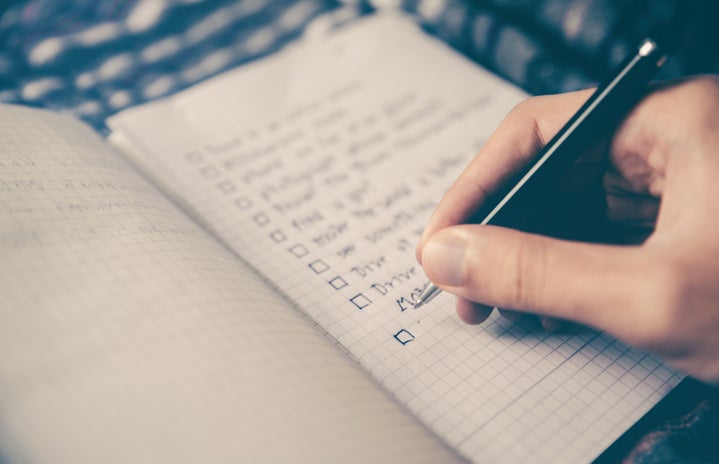Mental health is something that a lot of us struggle with from time to time. In the past year, I’ve resorted to journaling to help me cope with everything from the extreme problems to little shortcomings in my everyday life, and it’s helped me so much! Journaling helps me organize my thoughts, especially when I’m overwhelmed, and I find that I’m able to think more clearly and make more informed decisions after writing. I’ve seen in popular culture that there seems to be this “standard” of journaling: as in, you have to invest a certain amount of time and money into making it look aesthetically pleasing. I find that ridiculous –– you should be able to write as you please on your own time with none of this external pressure.
HOWEVER, if you’re already making pretty journals with cute color schemes and you enjoy doing so, then keep going! It’s important to have a creative outlet to express yourself. For those of you who just don’t know where to begin journaling (or if you’re like me and have no time to make it look cute), I have a few tips for you to get started.
Disclaimer: These tips are all from my own experience. Each person will have his, her, or their own preferences. Please don’t take these suggestions too seriously, as they are just suggestions and not strict guidelines. Your mental health is valuable, and everyone will have their own ways of dealing with it. If you or someone you know is experiencing mental health issues, please consult a professional.
- Don’t spend too much!
I’ll admit –– retail therapy is super cathartic! But spending a lot of money on fancy pens, highlighters, stickers, and journals, especially if you’re on a particular budget, may not be worth it in the long run. I only use Sharpie pens in my journaling, and a pack of those lasts me a solid six months before I have to restock. In terms of journals, just grab a small journal from the Bookstore. I wouldn’t use a full-sized journal for mental-health journaling so that you don’t mix it up with a journal for class. Plus, using a smaller journal brings me to my next point…
- Be sure that your journal is easily accessible!
I always keep my journal in my backpack, so whenever I feel stressed or overwhelmed about something, I can take out my journal and write about it. Maybe you just want to set aside the nighttime for journaling, and that’s okay, too! You don’t have to bring your journal everywhere –– just make sure that it’s in a place where you can easily find it.
- Find a format that you like!
Formatting should be the LAST thing you worry about when journaling, but when you’re just starting off, I find that it helps to have one to follow just so you can practice journaling with consistency. For instance, I always take note of the time I write, so all of my entries have a timestamp on the right hand side of the page. Not only did this help me develop a habit of writing at least once every day, but it also helps me keep track of my mood as it fluctuates throughout the day More examples include titling your entries or starting off with a question. Something simple like this makes your writing more interactive, immersive, and intuitive.
- Have fun with it!
There’s no one telling you what not to write in your journal. They’re your thoughts, and this journal is your way of processing them. If you want stickers, buy them in bulk on Amazon or support your favorite artists on Etsy. If you want those fancy highlighters, by all means, buy them! However you wish to express your thoughts, you should be empowered to. And again, if you are experiencing mental health issues, talk to someone about them.

